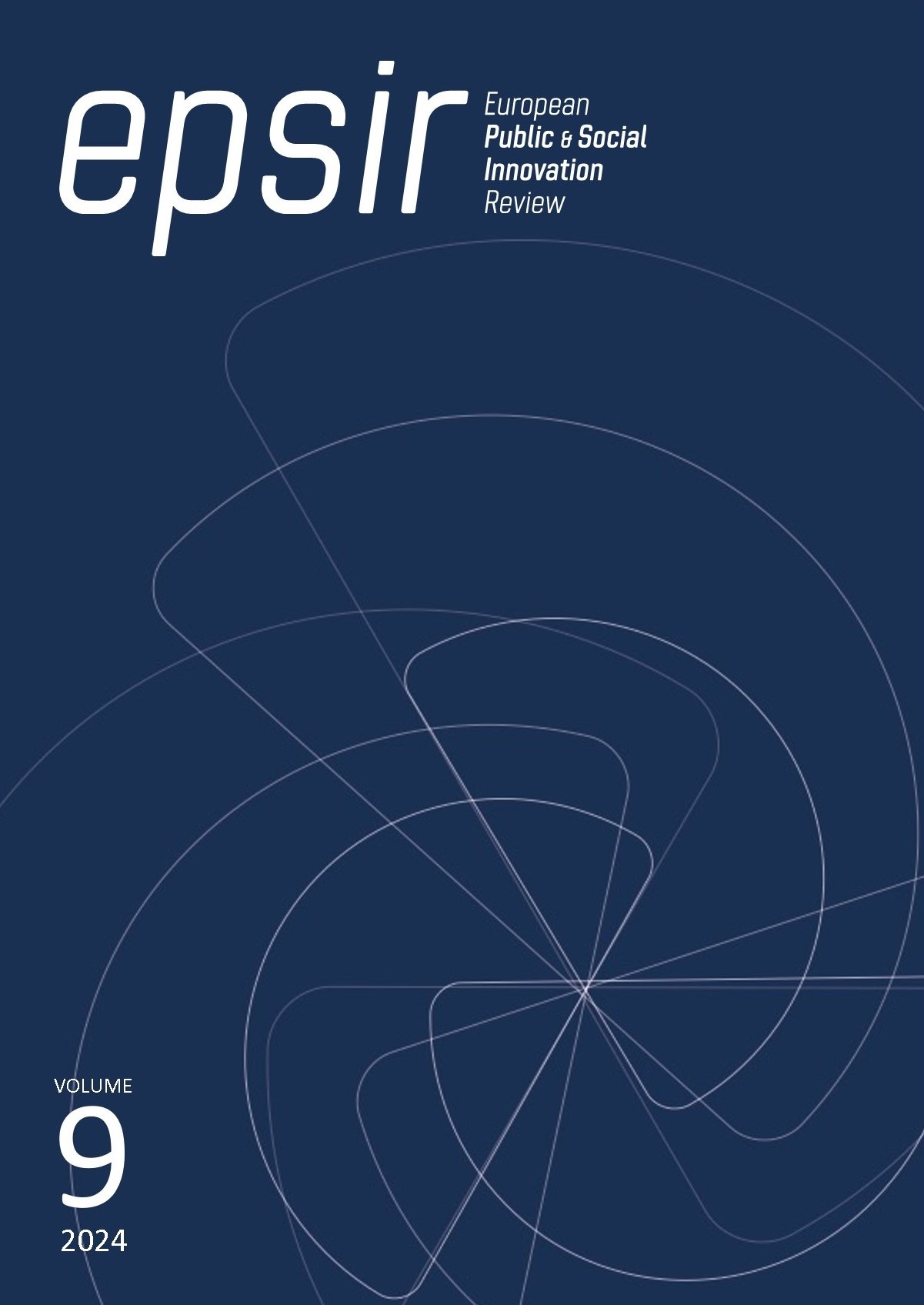El doblaje automático de vídeos educativos universitarios mediante inteligencia artificial con Heygen
DOI:
https://doi.org/10.31637/epsir-2024-358Palabras clave:
inteligencia artificial, doblaje automático, sincronización labial, traducción, cara a cara, contenido multimedia, Heygen, educaciónResumen
Introducción: La inteligencia artificial ha revolucionado la educación superior, proporcionando herramientas para crear contenidos multilingües. Este estudio evalúa el impacto y la efectividad del doblaje automático de vídeos educativos utilizando Heygen, que adapta grabaciones y crea materiales didácticos con avatares digitales. Metodología: Se examinó el uso de Heygen en la creación de contenidos educativos multilingües, analizando su compatibilidad con 60 idiomas y sus capacidades para personalizar avatares y grabaciones reales. Resultados: Los resultados muestran que Heygen es una herramienta práctica y efectiva, aunque presenta algunas limitaciones. Es compatible con 60 idiomas y permite la personalización de avatares y grabaciones reales. Discusión: Se compararon las ventajas y desventajas de Heygen con otras tecnologías similares. Se destacó la necesidad de más investigación para mejorar sus capacidades y superar las limitaciones actuales. Conclusiones: Heygen ofrece un potencial significativo para la creación de materiales educativos multilingües. Sin embargo, se requiere una mayor investigación para optimizar su uso y abordar sus limitaciones.
Descargas
Citas
Aguilar, L. (2024). Cómo usar la IA para doblar vídeos a otros idiomas. ADSLZone. https://cutt.ly/hedrHlwt
AI Hungry. (2024). HeyGen Pricing, Plans and Cost Breakdown for 2024. Aihungry.com. https://cutt.ly/AedrHqYB
Andre, D. (21 de junio de 2024). HeyGen Review 2024: Is It the Best AI Video Generator Tool? AllAboutIA.com. https://cutt.ly/3edrHRJx
Babeling. (13 de febrero de 2024). HeyGen Review: Sincere Thoughts on AI Video Creation. Babeling.com. https://cutt.ly/RedrH1UY
Brame, C. J. (2015). Effective educational videos. Vanderbilt University. Center for Teaching. https://cutt.ly/KedrH5GE
Chávez, M. E., Labrada, E., Carbajal, E., Pineda, E. y Alatriste, Y. (2024). Inteligencia artificial generativa para fortalecer la educación superior. LATAM Revista Latinoamericana de Ciencias Sociales y Humanidades, 4(3), 767-784. https://cutt.ly/Qedl6wuU DOI: https://doi.org/10.56712/latam.v4i3.1113
de los Reyes Lozano, J. y Mejías-Climent, L. (2023). Beyond the black mirror effect: the impact of machine translation in the audiovisual translation environment. Linguistica Antverpiensia, New Series: Themes in Translation Studies, 20, 1–19. https://doi.org/10.52034/lans-tts.v22i.790 DOI: https://doi.org/10.52034/lans-tts.v22i.790
Fishman, E. (5 de julio de 2016). How long should your next video be? Wistia.com. https://cutt.ly/feddzsib
Galindo-Domínguez, H., Delgado, N., Campo, L. y Losada, D. (2024). Doblaje automático de vídeos educativos: Un estudio comparativo. International Journal of Educational Research, 126, 1-13. https://doi.org/10.1016/j.ijer.2024.102381 DOI: https://doi.org/10.1016/j.ijer.2024.102381
Guo, Ph. J., Kim, J. y Rubin, R. (2014). How video production affects student engagement: an empirical study of MOOC videos. L@S '14: Proceedings of the first ACM conference on Learning @ scale conference, 41-50. https://doi.org/10.1145/2556325.2566239 DOI: https://doi.org/10.1145/2556325.2566239
Hadi, N. y Ainy, N. S. (2024). Increasing students' understanding of conservation using learning video media based on an artificial intelligence platform. JHSS Journal of Humanities and Social Studies, 8(1), 242-245. https://cutt.ly/8edl6x67
HeyGen Help Center. (2024). Subscriptions Explained: What You Need to Know. Help.heygen.com. https://cutt.ly/XedrJbCO
HeyGen. (2024). Plans & Pricing. Heygen.co. https://cutt.ly/sedrJzSI
Khalid, A. (2024). Employing artificial intelligence techniques to make films. Al-Academy Journal Special Issue, 171-180. https://doi.org/10.35560/jcofarts1423 DOI: https://doi.org/10.35560/jcofarts1423
López Ardao, J. C. (16 de octubre de 2017). ¿Cuál debería ser la longitud del vídeo educativo? The Flipped Classroom. https://cutt.ly/sLlwvdQ
Méndez, L. y Rolfo, M. (2024). ¿Cómo funciona la inteligencia artificial y su futuro? Heygen (la herramienta que necesitas conocer). Codigoencasa.com. https://cutt.ly/HedrJJhJ
Miquel-Vergés, J. (2022). Nuevas tecnologías en la educación superior virtual. Las tecnologías del ultrafalso y de la traducción cara a cara. HUMAN REVIEW International Humanities Review / Revista Internacional de Humanidades, 12(4), 1-20. https://cutt.ly/gedg2Ljk DOI: https://doi.org/10.37467/revhuman.v11.3967
Miquel-Vergés, J. (2024). Artificial Intelligence, deepfakes and face-to-face translation in automated dubbing and asynchronous multilingual communication. En D. Caldevilla (Ed.). Inteligencia Artificial ¿amiga o enemiga? Peter Lang. (en prensa).
Prajwal K. R., Rudrabha Mukhopadhyay, Philip, J., Jha, A., Namboodiri, V. y Jawahar, C. V. (octubre de 2019). Towards Automatic Face-to-Face Translation. MM '19. En Proceedings of the 27th ACM International Conference on Multimedia (pp. 1428-1436). CVIT. https://cutt.ly/jLf2AFa
Ramírez, A. (30 octubre de 2023). Heygen: La nueva forma de crear vídeos mediante inteligencia artificial. Marketing Capacitación. https://cutt.ly/cedgBvke
Rudrabha Mukhopadhyay (2019). Face to Face Translation [vídeo]. YouTube https://cutt.ly/MLk5U8L
Schiefelbein, J. S. (2023). Human vs Machine: Hyper-Realistic Avatars and Their Efficacy as a Communication Channel [Tesis doctoral]. Muma College of Business, University of South Florida. https://cutt.ly/pedg4jkP
Sprout24. (2024). Heygen. Sprou24.com. https://sprout24.com/hub/heygen/
Tekpon. (2024). HeyGen. Tekpon.com. https://cutt.ly/gedrJ9t8
Descargas
Publicado
Cómo citar
Número
Sección
Licencia
Derechos de autor 2024 Joan Miquel-Vergés

Esta obra está bajo una licencia internacional Creative Commons Atribución-NoComercial-SinDerivadas 4.0.
Authors who publish with this journal agree to the following terms:- Authors retain copyright and grant the journal right of first publication with the work simultaneously licensed under Creative Commons Non Commercial, No Derivatives Attribution 4.0. International (CC BY-NC-ND 4.0.), that allows others to share the work with an acknowledgement of the work's authorship and initial publication in this journal.
- Authors are able to enter into separate, additional contractual arrangements for the non-exclusive distribution of the journal's published version of the work (e.g., post it to an institutional repository or publish it in a book), with an acknowledgement of its initial publication in this journal.
- Authors are permitted and encouraged to post their work online (e.g., in institutional repositories or on their website) prior to and during the submission process, as it can lead to productive exchanges, as well as earlier and greater citation of published work (See The Effect of Open Access).



